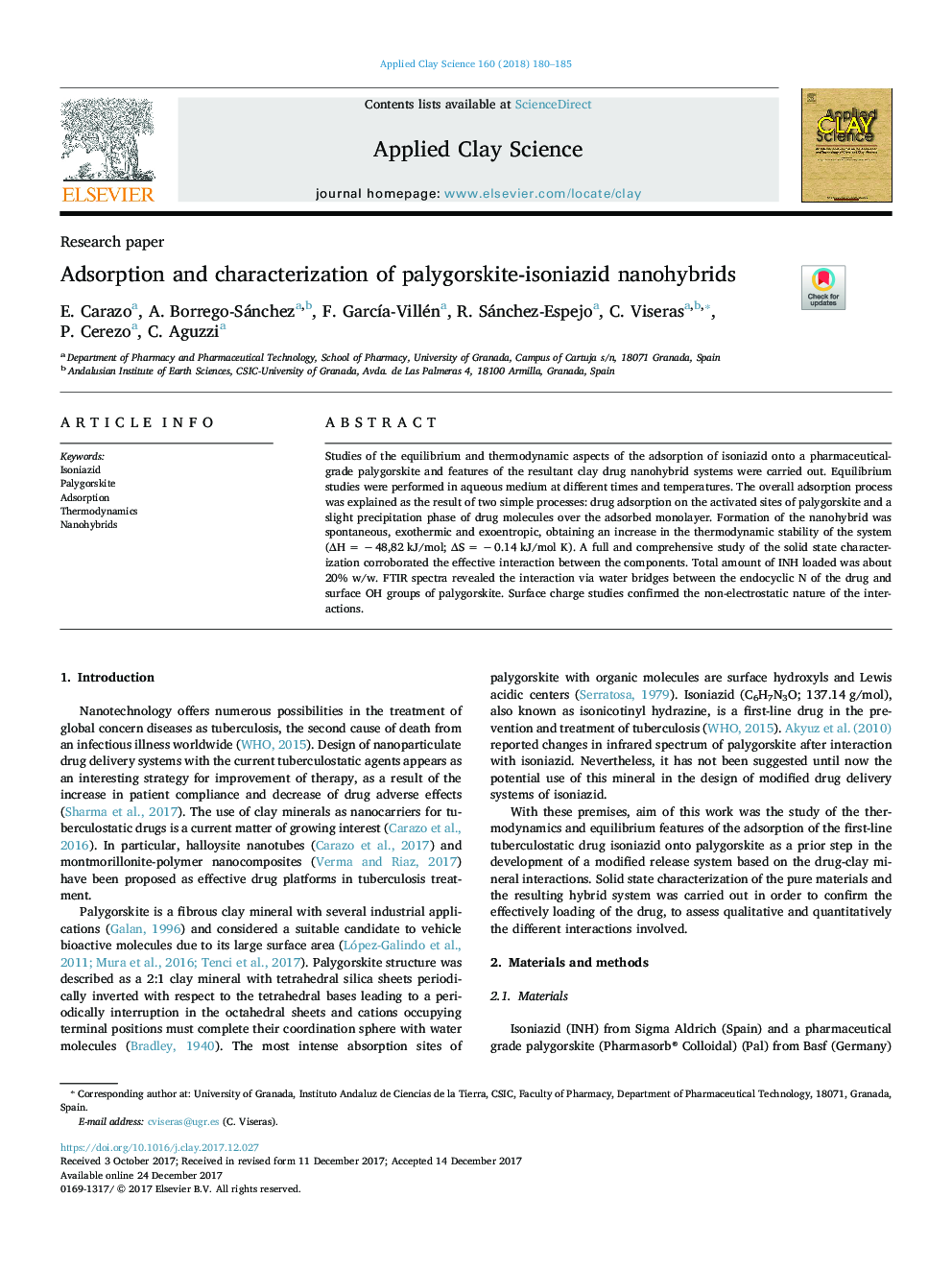| Article ID | Journal | Published Year | Pages | File Type |
|---|---|---|---|---|
| 8045881 | Applied Clay Science | 2018 | 6 Pages |
Abstract
Studies of the equilibrium and thermodynamic aspects of the adsorption of isoniazid onto a pharmaceutical-grade palygorskite and features of the resultant clay drug nanohybrid systems were carried out. Equilibrium studies were performed in aqueous medium at different times and temperatures. The overall adsorption process was explained as the result of two simple processes: drug adsorption on the activated sites of palygorskite and a slight precipitation phase of drug molecules over the adsorbed monolayer. Formation of the nanohybrid was spontaneous, exothermic and exoentropic, obtaining an increase in the thermodynamic stability of the system (ÎH = â 48,82 kJ/mol; ÎS = â 0.14 kJ/mol K). A full and comprehensive study of the solid state characterization corroborated the effective interaction between the components. Total amount of INH loaded was about 20% w/w. FTIR spectra revealed the interaction via water bridges between the endocyclic N of the drug and surface OH groups of palygorskite. Surface charge studies confirmed the non-electrostatic nature of the interactions.
Related Topics
Physical Sciences and Engineering
Earth and Planetary Sciences
Geochemistry and Petrology
Authors
E. Carazo, A. Borrego-Sánchez, F. GarcÃa-Villén, R. Sánchez-Espejo, C. Viseras, P. Cerezo, C. Aguzzi,
